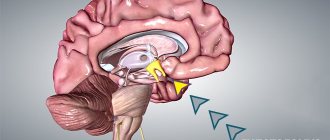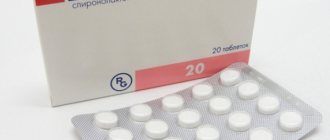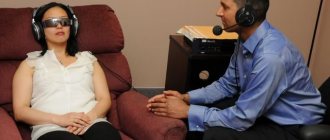Typically, people perceive the term “borderline disorder” as a condition where a person is 50% healthy and 50% patient. This is completely untrue. If the criteria for any disorders are not observed in the way of thinking, the state of the emotional sphere, and behavioral factors, then the person simply is not among the sick. Of course, this type can work with a psychotherapist for the rest of his life, “heal the soul,” and look for the causes of contradictions. But this is not the case when it is legitimate to at least somehow mention psychiatry.
Schizoaffective disorder is a disease characterized by episodic psychosis
What is schizoaffective disorder
Schizoaffective disorders, which have several forms, are psychotic pathologies bordering on schizophrenia and affective disorders, depression and bipolar psychosis.
Schizophrenia is based on a breakdown of the way of thinking and a disorder of emotional perception.
Affective disorders manifest themselves in a decrease in emotional perception and negative perception of the surrounding world.
This type of disease can affect all areas of life and social relationships. Characteristic of schizoaffective psychosis is considered to be a paroxysmal course with manifestations characteristic of an affective disorder (mania, depression).
Causes of affective psychosis
The reasons influencing the occurrence of affective psychosis have not been fully identified to date. New data in this area can be attributed to hereditary factors influencing the occurrence of the disease. Affective pathology is also influenced by neurochemistry, the use of antidepressants and other medications that act on nerve cell receptors. Researchers are based on clinical genetics data that confirm the significant contribution of hereditary pathologies to the development of psychosis.
Special methods for studying psychosis have proven that genetic factors influencing the occurrence of the disease account for 70%, and environmental factors - 30%. The disease occurs twice as often in women than in men. Moreover, female affective psychosis develops in the postpartum period, during menstruation, and premenopause. These facts are proof of the influence of hormonal imbalance as the cause of the disease.
What causes schizoaffective psychosis?
Schizoaffective disorder, the symptoms of which will be presented below, has an uncertain etiology. Doctors and scientists tend to argue that both genetic and biochemical factors, as well as environmental factors, can lead to it.
Biochemical causes are associated with an imbalance of chemicals, neurotransmitters, responsible for the process of transmitting messages between cells in the human brain.
Viral infections, severe stressful situations, and social withdrawal of a person provoke schizoaffective disorder. The medical history of patients indicates that such external environmental factors lead to the disease if a person has a genetic predisposition.
Main provoking factors
Affective psychoses can be caused by:
- fluctuations in the body's hormonal levels;
- genetic predestination;
- concomitant somatic pathology (including hormonally caused) or living through certain periods of life (puberty, menopause, menopause, pregnancy);
- taking antidepressants.
The provoking factor for the onset of an affective state is the patient’s being in an extreme mental position. This is either a situation of a real threat to life, or only potentially regarded by the mind as such.
Figuratively speaking, the mind either perceives an ordinary situation as threatening death for the body, or imagines it to such a state, staging the experience of pain, suffocation or similar sensations.
The state of affective psychosis is characterized by a narrowing of the level of consciousness, as well as thinking, behavior and speech that are inadequate to the environment.
Deviations in these functions arise due to a sharp change in the energy of the brain due to the accumulation in the blood washing it (under the influence of a stress factor) of under-oxidized waste products, which become toxic substances-hallucinogens.
The patient’s body experiences the first experience of experiencing affective states while still in the fetal state under the influence of brain hypoxia caused by the behavior and energy of the pregnant mother.
The risk group includes persons of both sexes (mainly women) with a personality type with a predominance of a psychopathic-hysterical component, as well as persons with a psyche deformed by injuries to the structures of the nervous system or neuroinfections.
Symptoms of the disorder
The first symptoms of the disease can occur at any age. The clinical picture has signs of schizophrenic and affective disorder if it manifests itself:
- decreased appetite;
— sleep disturbance (drowsiness or insomnia);
- increased excitability against the background of aggressiveness;
— rapid fatigue;
- an inferiority complex, accompanied by deep hopelessness and fatality;
- difficulty concentrating on actions, mental fog;
- obsessive suicidal tendencies;
- acceleration of the rate of speech, but at the same time its violations are also noticeable, manifested by stuttering or “swallowing” the endings of words;
— dangerous social behavior that threatens one’s own life and the lives of other people (during exacerbations);
- strange, unusual, incorrect behavior;
- illogical expression of emotions.
Manifestation of the depressive phase
In depressive states, hysterical, anxiety-phobic, senesto-hypochondriacal disorders, or the classic of the genre - melancholy depression may predominate. The structure of reactive depression is caused by a situation that traumatizes the psyche. The affect of despondency begins to dominate in behavior. Indifference, depression and hopelessness completely take over the patient’s thoughts. There comes a focus on the circumstances that accompanied the injury. Behavior is expressed by passivity. The conversation is filled with self-accusation or accusations of others.
In these conditions, disorders of a vegetative nature are observed (rapid heartbeat, surges in blood pressure, sweating). The patient may complain of poor sleep and nightmares. The duration of this condition reaches three months.
Manifest depression, like reactive depression, develops against the background of harmful external influences, which are based on traumatic situations. In this case, the patient’s state of concern for personal health comes first. He complains about circumstances, fate, and overly dramatizes everything.
This depression is expressed by a slow pace of speech and thinking, which is also combined with their poverty and monotony. Motor retardation is observed. There are complaints of “mental pain” at the level of physical sensations. The conversation is dominated by ideas of self-blame or sinfulness, and the mood increases in the evening hours. There may be a decrease in appetite. The duration of such depression is up to 6 months. In affective psychosis, depressive phases in their varied manifestations account for 80% of all phases.
Typology of pathology
Schizoaffective disorders can be accompanied by different background moods, depending on the prevalence of which we can talk about three main types of developing pathological process:
— An elevated mood with delusions of grandeur, with a delusion about great origins and one’s own superpowers is a manifestation of a manic type disorder. Endless fun, hyperactivity with a reduced need for sleep, an accelerated pace of speech, thoughts and actions, delusional ideas that take on a cosmic or magical character - all this is schizoaffective disorder (manic type). Overexcitement, irritability, aggressiveness and severe disrupted behavior can be eliminated within a few weeks with proper treatment.
- If schizoaffective disorder is of the depressive type, then it manifests itself in low mood with elements of hypochondriacal delirium, poor appetite, weight loss, apathy towards everything around you and towards life, general weakness, a feeling of hopelessness. Often with this disorder there is a noticeable deterioration in memory and concentration.
- Schizoaffective disorder can be both depressive and manic. The mixed type is characterized by the fact that with such a pathology, fear and apathy are replaced by happiness and vice versa.
Types of disease
Schizoaffective psychosis in psychiatry is divided into several types, the clinical picture of which has certain differences.
The most unfavorable prognosis is for the manic type of schizoaffective disorder, in which the symptoms of mania (motor agitation, euphoria, aggression towards other people) become the most pronounced. It is precisely because of the aggressiveness of the patient with this form of the disease that the question of hospitalization in a psychiatric hospital most often arises.
The depressive type of disorder involves the appearance of symptoms of moderate or severe depression. In this case, the prognosis for the patient is more favorable, especially if the depressed state of mind does not manifest itself in the most severe degree.
The most favorable course is considered to be a mixed type of illness, in which schizoaffective psychosis develops together with bipolar affective disorder. Treatment for this form of the disease is most often outpatient, and recovery occurs relatively quickly.
How to correctly diagnose the disease
Since schizoaffective disorders have manifestations of two mental illnesses, it is sometimes difficult even for doctors to make a correct diagnosis. Laboratory tests are not helpful in diagnosing such disorders. However, the doctor may prescribe x-rays or a blood test in order to make sure that the symptoms are a manifestation of this particular pathology.
For diagnosis, doctors use a differential method and classify as schizoaffective psychosis only those cases where the following are present:
- manic-depressive syndrome for a long time;
- for two or more weeks, hallucinations and delusions as independent symptoms.
The doctor will need to make sure that there is no hardware and clinically confirmed disease or injury in the brain, and also exclude exposure to toxic and medicinal drugs.
If no physical causes are found as a result of the examination, the patient will be referred to a psychiatrist or psychologist, who, through specially designed interviews and tests, will determine whether the person is sick or healthy.
How is the disorder treated and is there a positive prognosis?
This mental illness occurs in cycles. The attacks last a short period, and the remission is quite long. But personality changes gradually appear if treatment does not begin. As many years of medical practice have shown, it is possible to live with schizoaffective disorder while being in society. The situation of such a person is better than that of a patient with an acute form of schizophrenia.
For treatment, cyclic medication courses are prescribed, as well as courses of psychotherapy. It is important to maintain stability in your emotional state to prevent the development of thoughts of suicide (this is common in advanced forms of mental illness).
After an examination, a psychiatrist prescribes courses of antipsychotics and other forms of drugs. The patient is admitted to the hospital only during acute attacks and cases where there is a risk of suicide or there is a danger to others. Medications such as mood stabilizers, antidepressants and antipsychotics can prolong the period between remissions of abnormalities. Therefore, it is impossible to stop treatment without the doctor’s consent.
Even if the patient has a mental disorder due to this disorder, professional psychotherapy will help him adapt to society.
Schizoaffective disorder: treatment
Therapy for schizoaffective psychosis begins with specifying the form of the disorder. After this, a course of medication is prescribed to stabilize the mood. It is complemented by psychotherapy and hands-on training to improve interpersonal and social skills.
Medications, as already mentioned, are selected depending on the type of disorder and the patient's condition. The use of neuroleptics such as Amitriptyline, Melipramine, Maprotiline is justified for depressive-paranoid attacks. Expansive paranoid disorders are treated with beta blockers, lithium, and Carbamazepine. For prophylaxis, a maintenance dose of potassium carbonate is prescribed, contained in the preparations “Contemnol”, “Litinol”, “Lithobid”.
Psychotherapy for schizoaffective disorders
The goal of psychotherapy is to tell the patient as much as possible about the disease and help him understand the reasons that led him to the painful state. Involving the family in psychotherapy sessions will help more effectively help a person who has been diagnosed with disorders.
Hospitalization for schizoaffective psychosis is not always required. In most cases, patients undergo outpatient treatment. Only people with severe and severe symptoms, as well as those who threaten the safety of their own life or the lives of others, can be hospitalized for stabilization of their condition.
A few words about prevention
Described by Aretaeus of Cappadocia back in the 1st century AD. as “a depressed state of mind when concentrating on any one thought,” and in the year 1854 by J. Baillarger and J. Falret as “insanity in double form,” a state of affective psychosis leading to vital melancholy, with proper and timely treatment leads to complete reversibility of changes in the psyche and restoration of all its functions.
Measures to prevent the disorder include saving the nervous system from injuries, neuroinfections, observing norms for the duration of work and rest, maintaining an adequate psychological climate in any team at the proper level, measures to maintain the body in a state of efficiency and the tone necessary for life.
Is it possible to avoid this pathology?
Since it is difficult to accurately establish the etiology of the disorder, it is not possible to prevent the development of this disease. But early diagnosis and adequate treatment make it possible to avoid frequent outbreaks of the disorder, hospitalization, and make it possible to preserve social and personal relationships, which without treatment this pathology can destroy.
Schizoaffective disorder, the syndromes and symptoms of which were presented above, being an endogenous illness, is still incurable, and it is not possible to cope with it on your own. However, preventive treatment with consultation in a psychiatric clinic will allow the patient to become a full-fledged person, have a normal, habitual lifestyle, study and work. Good health to you!









